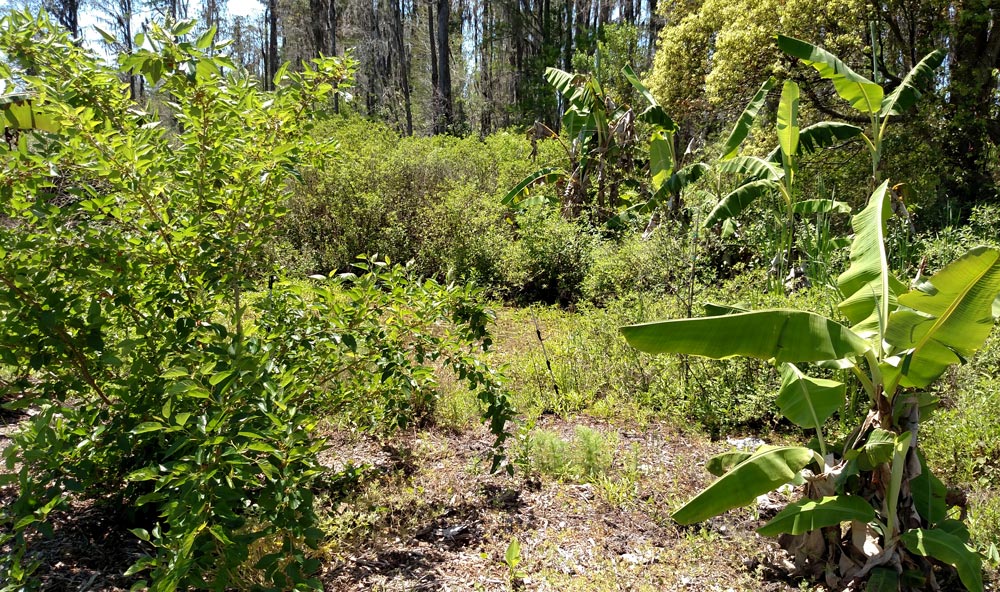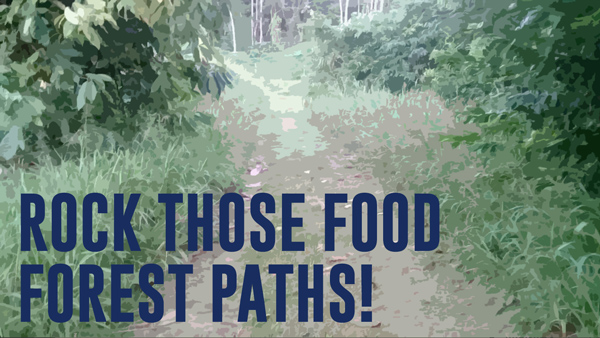Part of the idea of a food forest is “filling in all the pieces.”
You plant trees, then fill in around the trees with shrubs, then fill in around the shrubs with herbs and groundcovers, then plant vines to climb the trees – and eventually, every niche is filled.
The problem is, in order to do this for an entire space takes a lot of planting all at once – and a lot of mulch to fill in around the trees, otherwise the weeds run rampant.
In a food forest I helped design for some friends, they dodged this problem by bringing in thousands and thousands of pounds of tree company mulch:

That kept the weeds down, though as you can see it didn’t completely suppress them.
Mulch is excellent for improving the soil and holding water, but there’s no way I’m going to pay trucks to drop mulch over my entire food forest. I also don’t want to spread it!
The young trees I’ve planted aren’t nearly big enough to shade out the weeds yet. In fact, many of them are already overshadowed by towering weeds.
You can view this as a terrible pain and something that needs to stop – or you can accept the weeds and their role in covering bare ground. I choose the latter:
I’m not interested in weed eradication. I couldn’t get rid of them all even if I wanted to! That’s okay, though, as I can use them for mulch. They also keep the ground from eroding during the rainy season. My job is just to cut down the weeds that would otherwise strangle the plants I really want, like my star apple, loquat, betel palms, belimbi tree, papaya, etc.
Yet a weedy food forest can really look awful. If you’re in a neighborhood, it looks like a terrible mess instead of a planned forest garden.
My solution is to cut paths with a string trimmer:
Even if 95% of your yard is just weeds, cleaning up the edges and cutting paths makes it look tended.
A well-mown path through tall grass is inviting and beckons you to follow, whereas rampant chest-high growth just makes you think you’re standing in the front yard of a foreclosure property.
As I share in the video, I like to see where the paths wear themselves due to traffic, then cut those areas first. Then I clear around each important tree and plant. Then I cut meandering paths from tree to tree so I can walk around and check on their progress.
No matter what you do, you will have weeds. Learn to work with them and your food forest will do just fine.


3 comments
I do the same thing. Keep the paths mowed and cut the fields every year or so, or as you need mulch/ compost.
Yes!
[…] post Creating Paths in a Food Forest appeared first on The Survival […]
Comments are closed.